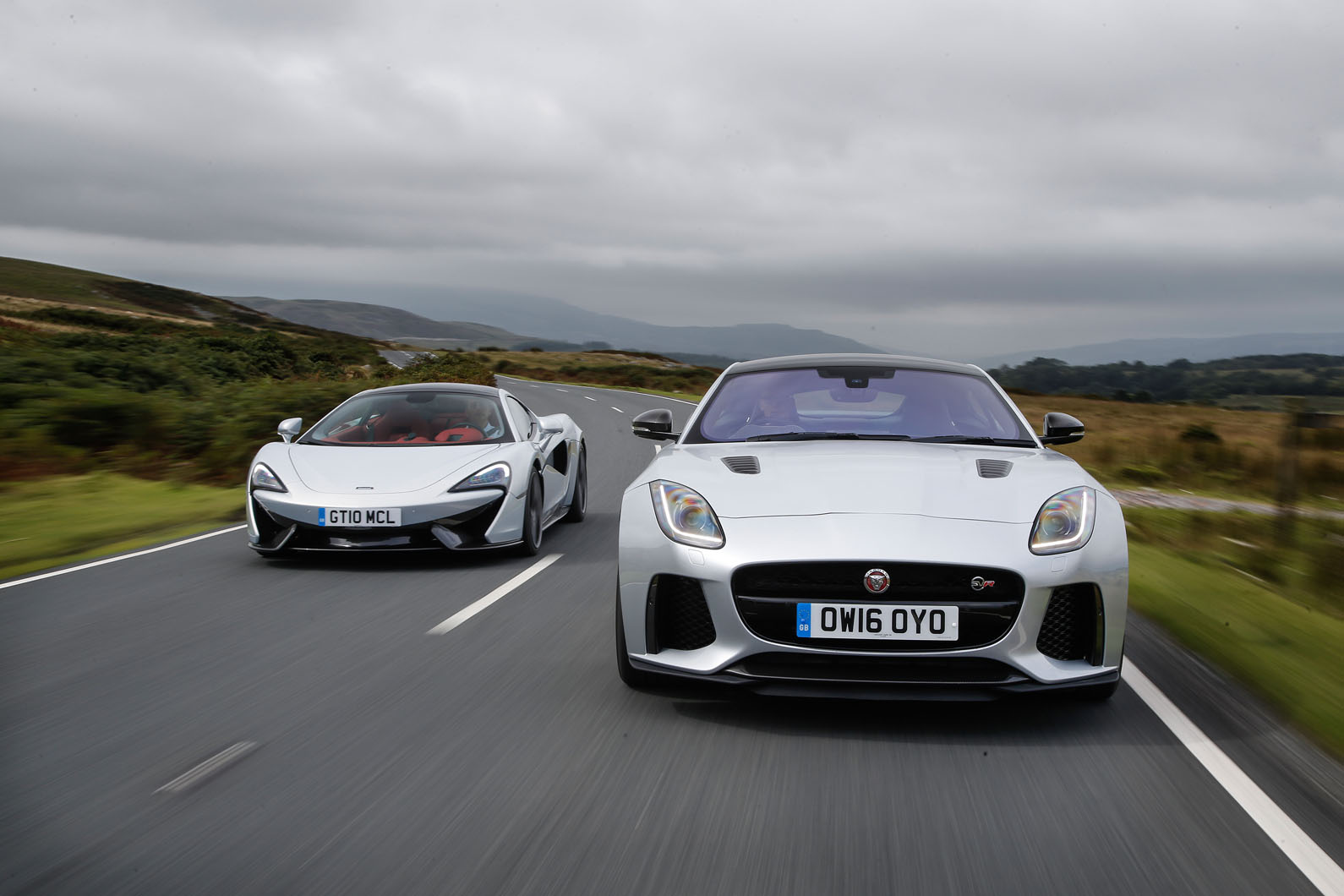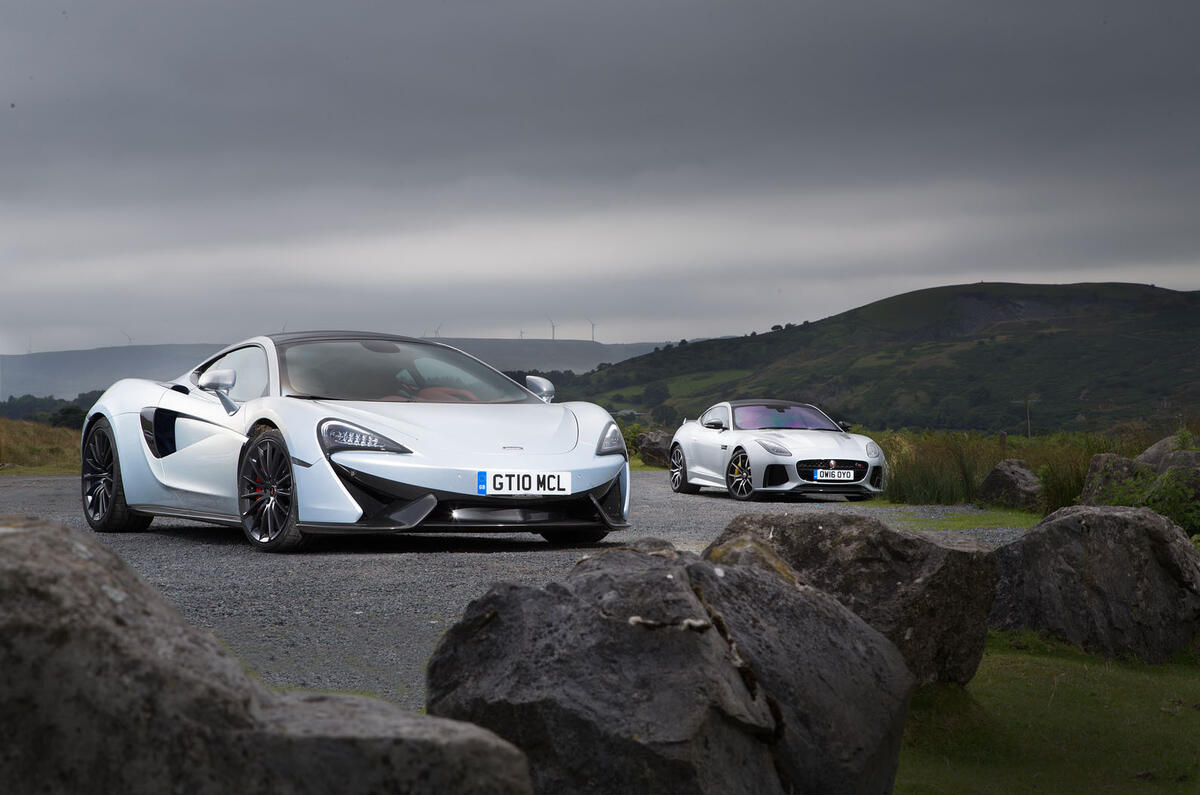The McLaren 570GT takes on the Jaguar F-Type SVR in our comparison of some of the greatest British GTs.
These are the cars we do best.
Over the years, Britain has been responsible for a few decent family hatches, probably more than our fair share of excellent off-roaders, a strong smattering of low-volume, stripped-out sports cars, more world-class executive saloons than you might think and even the odd all-out supercar. But from the moment that Sunbeams and Vauxhalls really announced Britain’s presence on the global automotive stage after the Great War, it's been fast, long-legged, sporting grand tourers at which we have excelled. Think of all those thundering Bentleys, dashing Aston Martins and even some of the swoopier Rolls-Royces: these are the cars that defined the concept of the gentleman’s carriage - if such a pejorative is even permissible these days.
Then there were the Jaguars. Always the Jags. From the XK to the E-Type, the Jaguar XJS to the Jaguar F-Type, in terms of their popularity, they have represented the apotheosis of this breed: fast, curvaceous, raffish and with just a faint whiff of cad left hanging in their exhaust smoke, Jaguar’s sporting coupés are the very embodiment of the great British GT. And none more so than the F-Type SVR.
You sense that the SVR is a car Jaguar would have liked to make many moons ago. But the company was too small, its products too patchy and its image too weak to sustain a sports car costing six figures. Indeed, even when the F-Type was being conceived, there was no such model in the product plan. But that was years ago and now Jaguar feels ready to sweat the brand in the same way that Jaguar Land Rover has done so successfully with Range Rover in recent times. So forget what you might read elsewhere; the SVR is no kind of revolution at all but, in theory at least, a next step on an already well-travelled road. The only question is whether it’s in the right direction.
Who’d have expected it would be McLaren that would help us figure that out? McLaren: a company known for supercars, hypercars, Formula 1 cars, Can-Am cars and absolutely not long-distance touring cars. If the SVR comes closest to fitting our idealised image of what a Jaguar should be, the 570GT is the least McLaren-like McLaren there has been.














































Join the debate
Add your comment
I would love to see what Jag
A jet and a propeller
Prices